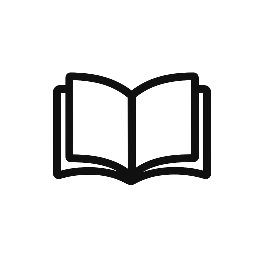TL;DR
- Ask vendors to prove fundamentals: SOC 2 Type II, current pen test, encryption in transit and at rest, and transparent subprocessors. Verify, do not trust.
- Use cloud-specific benchmarks to structure due diligence. CSA STAR and the Cloud Controls Matrix (CCM) cover identity, data lifecycle, logging, and tenant isolation that general IT audits often miss.
- Privacy and transfers are part of security. Confirm GDPR alignment and, if you move EU data to the US, check participation in the Data Privacy Framework.
- Concord example. Concord publishes a SOC 2 Type II, is listed at CSA STAR Level One, supports TLS 1.2+ and AES-256, enforces SSO and 2FA, runs bi-annual external pen tests, and states a zero-retention policy for its AI provider. Good signals for SMB buyers.
Download the CSV checklist. You can also view it in the table shown here.
| # | Control | What to verify | Evidence to request | Why it matters | Map to frameworks |
|---|---|---|---|---|---|
| 1 | SOC 2 Type II in-scope for Security at minimum | Report period within last 12 months. TSCs covered: Security + any others needed. | SOC 2 Type II report; bridge letter if older than 9 months. | Shows design and operating effectiveness of controls over time. | AICPA SOC 2 TSC |
| 2 | CSA STAR listing and CAIQ v4 completed | Vendor appears in CSA STAR registry. CAIQ answers match requirements. | URL to CSA STAR listing; CAIQ spreadsheet v4. | Transparent control attestation mapped to cloud frameworks. | CSA STAR, CCM v4 |
| 3 | Independent penetration test at least annually | Scope covers app, APIs, cloud infra. Retests for critical findings. | Executive summary of latest third-party pentest. | Validates exploitability of weaknesses. | NIST SP 800-115 |
| 4 | Documented Secure SDLC with code scanning | Static and dynamic analysis in CI. Security reviews for threat models. | SDLC policy, sample pipeline screenshots. | Prevents defects from reaching production. | OWASP ASVS, CSA CCM |
| 5 | Vulnerability management SLAs | Severity-based patch timelines. CVSS scoring. | Vulnerability mgmt policy and metrics. | Limits exposure window. | CIS Controls v8, NIST SI-2 |
| 6 | Incident response plan with customer notification | Playbooks, contact tree, tabletop results. | IR policy, last tabletop report. | Reduces impact and meets legal duties. | NIST IR family, CSA SEF |
| 7 | Business continuity and disaster recovery | Documented RTO/RPO. Annual failover tests. | BCP/DR plan and test report. | Protects contract operations during outages. | CIS 11, CSA BCR |
| 8 | Subprocessor transparency and review | Public list, annual risk reviews, DPAs in place. | Subprocessor list URL and review cadence. | Manages supply-chain risk. | GDPR Art. 28, CSA STA |
| 9 | Privacy program aligned to GDPR | Lawful basis, data subject rights, retention schedule. | Privacy policy, DPA, processing records. | Reduces regulatory exposure. | GDPR |
| 10 | EU–US Data Privacy Framework participation | Org name on DPF list. | DPF listing URL. | Simplifies cross-border transfers. | DPF |
| 11 | Encryption in transit TLS 1.2 or higher | TLS config scans. Strong ciphers only. | TLS scan results. | Prevents interception and tampering. | NIST SP 800-52r2 |
| 12 | Encryption at rest with AES-256 | Databases, backups encrypted. | Architecture docs, KMS screenshots. | Protects data if storage is accessed. | FIPS 197, CSA CEK |
| 13 | Key management with HSM/KMS | Key rotation, duties separation. | KMS policy, rotation logs. | Reduces key compromise risk. | CIS 3, CSA CEK |
| 14 | Data classification and minimization | Contract metadata vs content classification. | Classification policy, data flows. | Focuses controls on sensitive data. | NIST 800-53, CIS 3 |
| 15 | Retention and secure deletion | Retention by agreement type. Verified deletion. | Retention schedules and deletion logs. | Limits breach blast radius. | GDPR Art. 5, CSA DSP |
| 16 | Backups encrypted and tested | Automated, geo-redundant. Restores tested. | Backup policy and test results. | Ensures recoverability. | CIS 11, CSA BCR |
| 17 | SSO via SAML 2.0 or OpenID Connect | SSO enforced for all users. | SSO config docs. | Centralizes identity and revocation. | OASIS SAML, OIDC |
| 18 | MFA required for admins/high-risk actions | Policy enforces MFA. | Access policy, screenshots. | Mitigates credential abuse. | CIS 6, NIST IA-2 |
| 19 | Role-based access control and least privilege | Granular roles for CLM tasks. | RBAC matrix. | Prevents excessive access. | NIST AC family, CSA IAM |
| 20 | Automated provisioning with SCIM | JML automation, deprovision <24h. | SCIM config docs. | Closes orphaned accounts. | RFC 7644 SCIM 2.0 |
| 21 | OWASP ASVS L2 coverage | ASVS checks in QA. | ASVS mapping, test results. | Addresses app flaws. | OWASP ASVS 4.x |
| 22 | Secure HTTP headers | CSP, HSTS, X-Frame-Options set. | Header scan report. | Reduces XSS/clickjacking. | OWASP Headers |
| 23 | Tenant isolation | Logical isolation of tenants. | Architecture, test results. | Prevents cross-tenant leaks. | CSA IVS, NIST SC |
| 24 | API security | AuthN/Z, rate limits, logs. | API docs, gateway policies. | Protects integrations. | CSA AIS, NIST AC/SC |
| 25 | Comprehensive audit logging | Immutable logs for CLM events. | Logging schema, SIEM screenshots. | Supports forensics. | NIST AU family, CSA LOG |
| 26 | Change management controls | Peer review, rollback, SoD. | Change tickets, policy. | Prevents risky releases. | CIS 4, NIST CM |
| 27 | Patch mgmt for hosts/deps | Monthly for medium; expedited critical. | Patch policy, metrics. | Reduces exploit window. | CIS 7, NIST SI-2 |
| 28 | Status page and uptime SLA | Public status, historical incidents. | Status URL, RCA sample. | Accountability. | CSA BCR, GRC |
| 29 | Data residency options | Regions offered, commitments. | Residency docs, contract. | Supports sovereignty needs. | CSA DSP, STA |
| 30 | AI usage policy | No training on customer data. | AI policy, provider terms. | Prevents unintended data use. | Privacy by design |
Background and context
Contract lifecycle management platforms store draft agreements, executed contracts, counterparty PII, and sometimes payment or health data in attachments. That puts CLM squarely in scope for enterprise security and privacy controls. General frameworks like NIST SP 800-53 define the control families. Cloud-specific programs like CSA STAR and the Cloud Controls Matrix help you test a SaaS vendor’s reality, not only their policy statements.
The 30 controls that matter
Use this as a yes/no plus evidence list in RFPs and security reviews. Each control maps to one or more public frameworks so your infosec team can cross-reference quickly. Full details and evidence prompts are in the downloadable CSV.
Governance and assurance
- SOC 2 Type II. Review period within the last 12 months. Security TSC at minimum.
- CSA STAR listing with CAIQ v4 responses. Prefer Level 2 if your risk warrants it.
- Independent penetration testing at least annually, with retest of critical findings.
- Secure SDLC documented, with code scanning in CI and threat modeling. Map to OWASP ASVS.
- Vulnerability management SLAs based on severity and CVSS. NIST SI-2 alignment.
- Incident response plan and customer notification triggers. Tabletop exercises recorded.
- Business continuity and disaster recovery with tested RTO and RPO.
- Subprocessor transparency and annual reviews. Contracts align to GDPR Article 28.
- Privacy program that documents lawful basis, data subject rights, and retention.
- EU-US Data Privacy Framework participation when relevant to cross-border transfers.
Data security
11) Transport security: TLS 1.2 or 1.3 with strong cipher suites, per NIST SP 800-52r2.
12) Encryption at rest using AES-256. Validate via architecture and KMS settings.
13) Key management: HSM or cloud KMS, rotation, and separation of duties.
14) Data classification and minimization across repositories and attachments.
15) Retention and verified deletion routines for contracts and derivatives. GDPR supports storage limitation.
16) Backups encrypted and periodically restored to test recoverability.
Identity and access
17) SSO via SAML 2.0 or OpenID Connect for all workforce access.
18) Multi-factor authentication required for admins and critical actions.
19) Granular RBAC with least-privilege defaults for drafting, approving, exporting, and reporting.
20) Automated provisioning and deprovisioning via SCIM 2.0.
Application and platform
21) OWASP ASVS Level 2 coverage for web app and APIs during QA.
22) Secure HTTP headers like HSTS and CSP enabled. Validate with a header scan.
23) Tenant isolation documented and tested in a multitenant architecture.
24) API security with auth, authorization, rate limits, and audit logs.
25) Comprehensive, tamper-evident audit logging for access, edits, exports, and e-signature events.
26) Change management with approvals, rollback, and segregation of duties.
Operations and transparency
27) Patch management cadence for hosts and dependencies, with expedited path for criticals.
28) Public status page, uptime SLA, and incident postmortems for transparency.
29) Data residency options with documented regions and migration approach.
30) AI usage policy that defaults to no training on customer data and requires zero-retention from AI vendors.
Vendor spot check: Concord
Objective signals a CLM buyer can verify in minutes.
- SOC 2 Type II. Concord states it provides a SOC 2 Type II and makes it available via a Conveyor portal. Ask for the report and a bridge letter.
- CSA STAR. Concord states it has a STAR Level One rating. You can also find Concord’s listing in the CSA STAR Registry.
- Hosting and encryption. Concord says it uses AWS data centers audited to ISO 27001 and others, uses TLS 1.2 or higher in transit, and AES-256 at rest.
- Access controls. Concord notes granular roles, SSO, and 2FA.
- Testing and resilience. Concord cites bi-annual external penetration tests, automated daily backups, and incident management.
- AI. Concord states its AI provider adheres to a zero data-retention policy and does not use customer data for model training.
These do not replace independent assurance. They do shorten your initial screen.
How to use this checklist in procurement
- Put the 30 controls into your RFP or security questionnaire.
- Ask for primary evidence, not marketing PDFs: SOC 2 report, pen test letter, CAIQ v4, policies, and screenshots of actual settings.
- Map vendor responses to CSA CCM and NIST control families so your security team can sign off quickly.
Methods and limitations
We compiled the control list from cloud and application security standards: CSA STAR and the Cloud Controls Matrix, NIST SP 800-53 for control families, NIST SP 800-52r2 for TLS, FIPS 197 for AES, OWASP ASVS and the OWASP Secure Headers project for application hardening, GDPR for privacy requirements, and the US Department of Commerce resources for the Data Privacy Framework. We verified Concord’s public security page and referenced its CSA STAR registry presence. We did not test any product or review non-public audit reports. Your legal and security teams should review the underlying evidence before approving a CLM vendor.
Sources
- AICPA. SOC 2 for Service Organizations and Trust Services Criteria.
- Cloud Security Alliance. STAR program and Cloud Controls Matrix v4.
- NIST SP 800-53, Rev. 5, controls catalog.
- NIST SP 800-52r2, TLS guidance.
- FIPS 197, Advanced Encryption Standard (AES).
- OWASP Application Security Verification Standard. OWASP Secure Headers.
- GDPR, Regulation (EU) 2016/679.
- US Department of Commerce. Data Privacy Framework overview.
- Concord. Security and Compliance page. CSA STAR Registry entry.


Leave a Reply